Steven R. Gerber – World Premiere Recordings
Original price was: £12.00.£10.00Current price is: £10.00.
TRACKS
1-4 – Sinfonietta No. 1 (Piano Quintet), Gerber arr. Daron Hagen
– Preview mov. III, Presto, here
5-8 – String Sinfonia No. 1 (String Quartet No. 4), Gerber arr. Adrian Williams
– Preview mov. I, Moderato, here, from 15th October
9-10 – Two Lyric Pieces for Violin and Strings
– Preview mov. II, Passacaglia, here, from 29th October
11-13 – String Sinfonia No. 2 (String Quartet No. 6), Gerber arr. Adrian Williams
14-15 – Sinfonietta No. 2 (String Quartet No. 5, Gerber arr. Adrian Williams
ARTISTS
Emily Davis, violin
English Symphony Orchestra & English String Orchestra
Kenneth Woods, conductor
In stock
Most of the music on this recording consists of arrangements of chamber music pieces by Steven Gerber (1948-2015), commissioned by the Gerber Trust to help make performances of his music more accessible for chamber orchestras, smaller symphony orchestras and string orchestras. Taken together with Gerber’s beautiful Two Lyric Pieces for Violin and Strings, they provide a fascinating overview of Gerber’s development as a composer over most of the last 20 years of his working life.
Steven R. Gerber was born in 1948 in Washington, D.C. and made his home in New York City, where he died on May 28, 2015, aged 66. He received degrees from Haverford College and from Princeton University, where he received a 4-year fellowship. His composition teachers included Robert Parris, J. K. Randall, Earl Kim, and Milton Babbitt.
Additional information
| Weight | 105 g |
|---|---|
| Dimensions | 142 × 125 × 10 mm |
| Catalogue Number | NI 6423 |
| Release Date | 5th November 2021 |
| Duration | 73.07 |
| Number of Discs | 1 |
| Barcode / UPC | 0710357642326 |

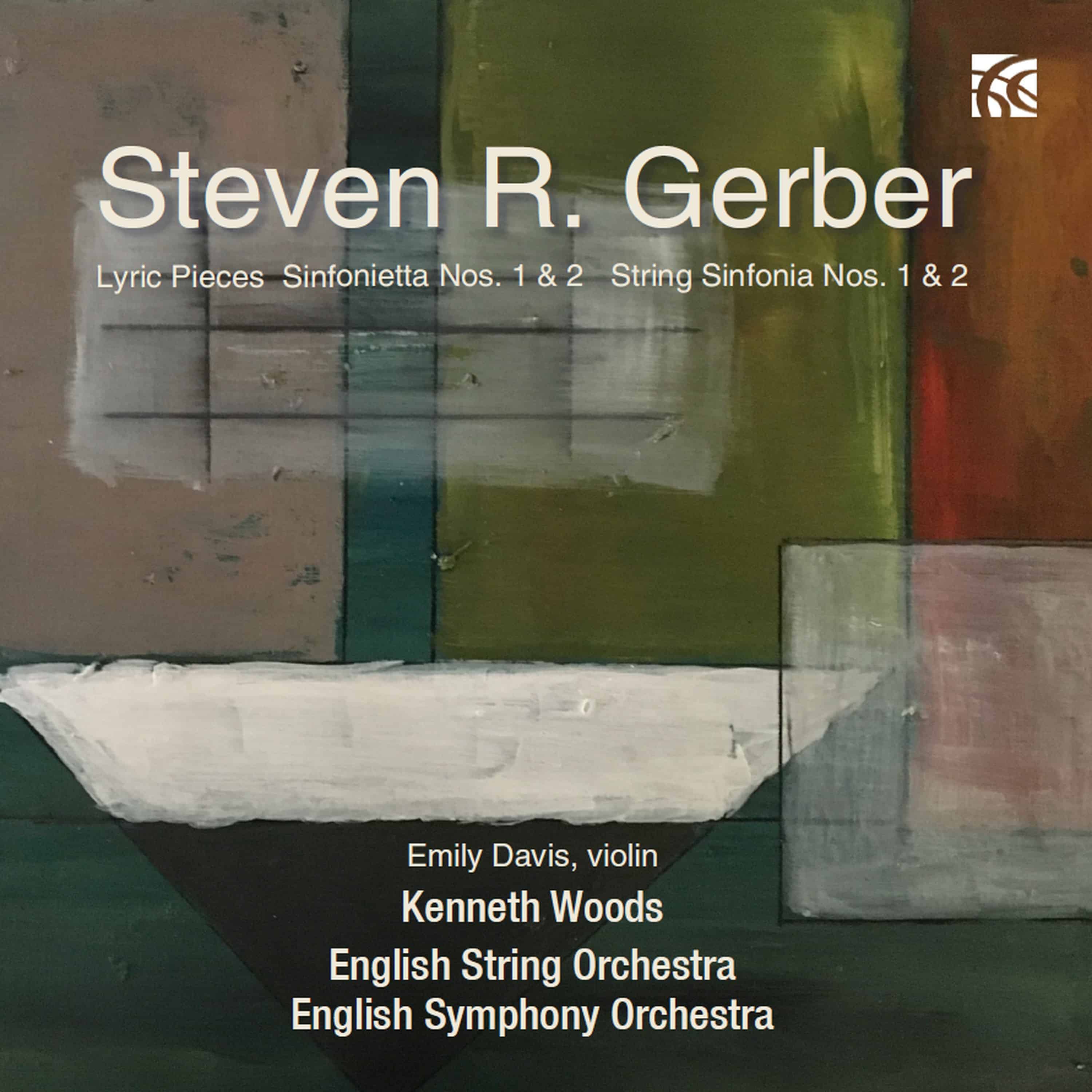
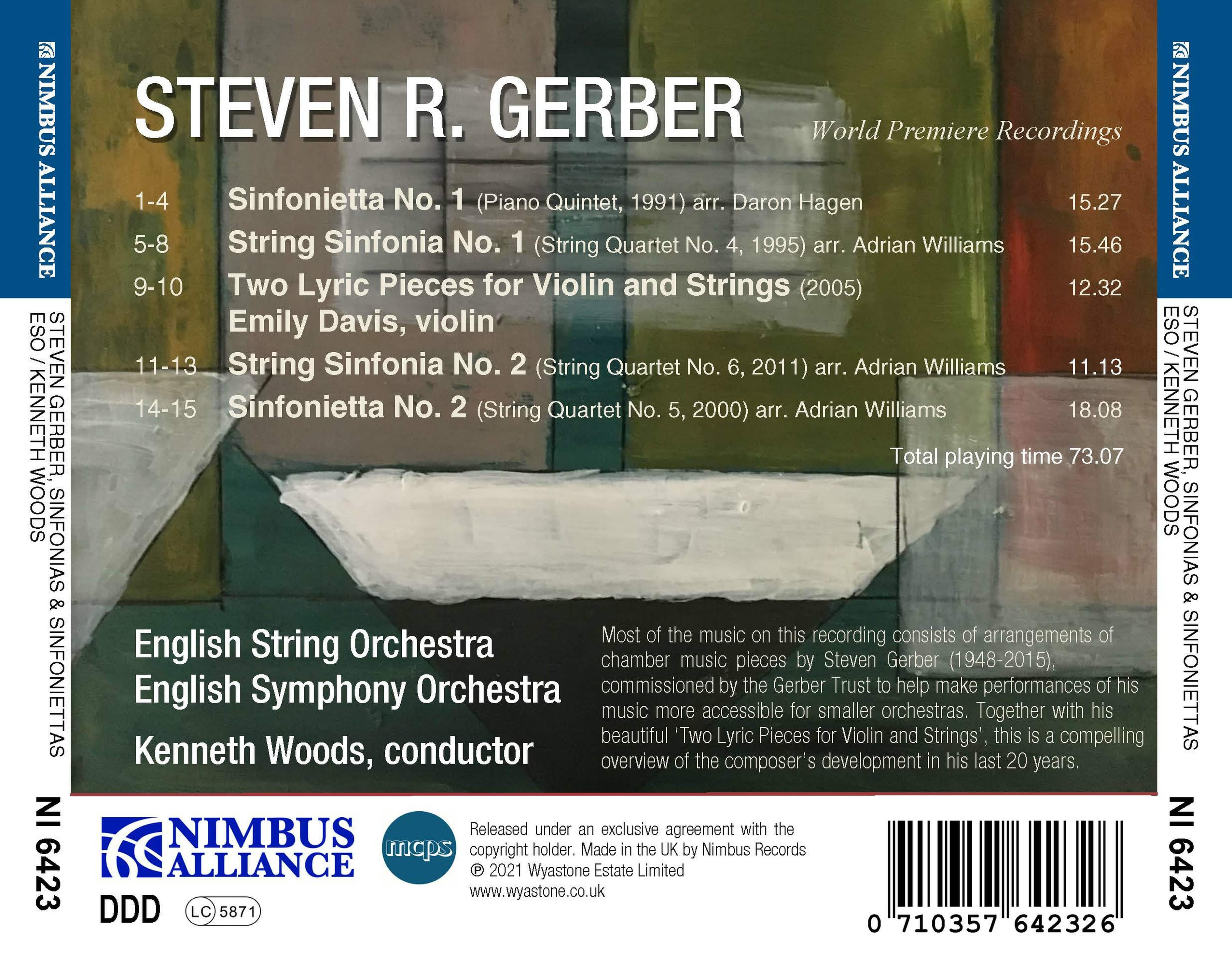
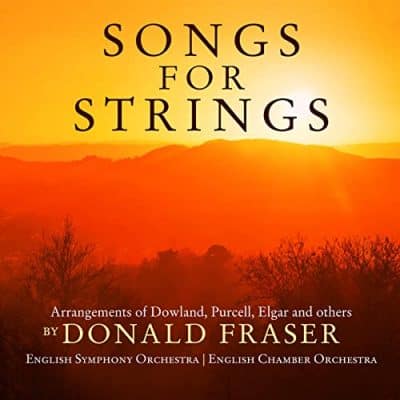
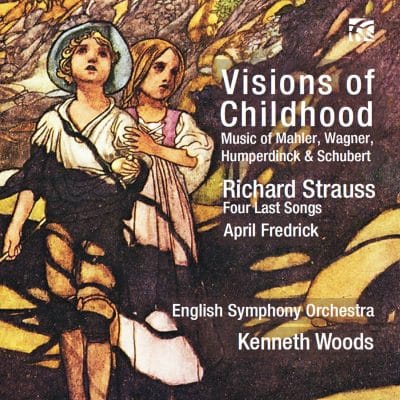
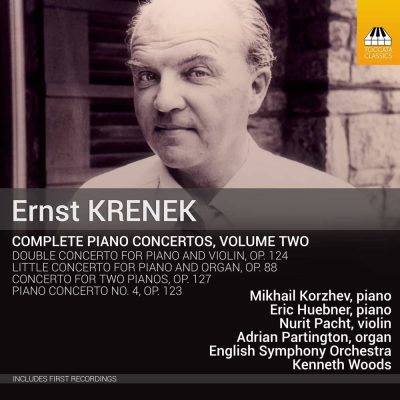
ESO Admin (verified owner) –
https://arcana.fm/2021/12/22/eso-woods-gerber/
Written by Richard Whitehouse
What’s the story?
The English Symphony Orchestra returns with music by American composer Steven R. Gerber (1948-2015). Little known in the UK, it enjoyed wide exposure in the Russia of the immediate post-Soviet era and could well find a new audience through such pieces as those featured here.
What’s the music like?
In common with many composers of his generation, Gerber’s output charts a trajectory from serialism to a direct re-engagement with tonality, but his success in aligning these nominally opposing aesthetics confirms a creative insight matched by (surprisingly?) few of his peers. That four out of the five pieces are arrangements from chamber works should not imply any lack of versatility on the composer’s part; rather, these are all pieces more likely to reach a wider listenership through being reimagined for larger though still relatively modest forces.
This is evident not least in the case of the two Sinfoniettas. The First is an arrangement of the Piano Quintet by Daron Hagen (pupil of David Diamond and Ned Rorem, and a composer of numerous works for the stage) whose five movements evolve from the tensile incisiveness of its preludial first movement, via the capricious then scurrying manner of the Intermezzo and Scherzo that ensue, to a finale whose accrued emotional plangency finds its apogee in a coda whose headlong impetus renders what went before from an appreciably different perspective.
The other arrangements were all undertaken by Adrian Williams, himself a notable composer whose large-scale Symphony the ESO has recently recorded for future release. Derived from Gerber’s Fourth Quartet, the First String Sinfonia is most arresting for the consistent intensity of its central movements – a Lento then a Maestoso that might have functioned as finale had not the composer opted, rightly as it turns out, to let the emotion subside over the course of a brief yet affecting Postlude – one that balances the gentle opening Moderato to potent effect. As derived from Gerber’s Sixth Quartet, the Second String Sinfonia emerges as a much more equivocal work – the angular and ambivalent Allegro followed by the menacing Intermezzo, then a final Theme and Variations which ultimately winds down towards an uncertain repose.
A more elaborate, indeed methodical take on the Variations format is pursued by the second and final movement of Gerber’s Fifth Quartet, here arranged as the Second Sinfonietta which again makes use of fuller instrumentation and exudes more charged expression. Not least the opening Fantasy, whose determined contrasts of mood make for a disjunct overall trajectory such as is countered, though not wholly resolved, through the steady and always inevitable build-up of its finale towards a forceful while by no means decisive or clinching apotheosis.
Does it all work?
Yes. This is engaging music which, if it tends to an unrelieved earnestness, cannot be faulted for emotional sincerity. It was astute programming to include Two Lyric Pieces for violin and strings, the only item in its original guise, whose inward soulfulness finds Gerber at his most approachable – not least when Emily Davis renders the solo part with such fluency and poise.
Is it recommended?
Indeed, directed by Kenneth Woods with unfailing conviction in sound of real clarity. Those who are coming afresh to Gerber should certainly respond positively to what is heard here.
ESO Admin (verified owner) –
https://www.pizzicato.lu/kurzkritiken-short-reviews-by-remy-franck-35/
Written by Remy Franck
The music of American Steven Gerber (1948-2015) is inventive, individual, and, despite its progressiveness, easily accessible. On a CD from Nimbus, the English String Orchestra and the English Symphony Orchestra under Kenneth Woods perform a number of works that have been transcribed from Gerber’s chamber works into pieces for string orchestra or Sinfonietta. Powerful melodicism and rich, often angular thematic material make these works, performed in committed interpretations, a remarkable testament to a forceful, strong and communicative voice.
ESO Admin (verified owner) –
Fanfare Magazine – Issue 45:5 (May/June 2022)
Feature article by Colin Clarke
A fair amount of the music of Steven R. Gerber has been covered in the Fanfare Archive, including the First Symphony and Viola Concerto (Chandos, Fanfare 24:2), and a possibly difficult to find Koch disc from over 20 years ago featuring the Violin Concerto, the Cello Concerto, and the Serenade for String Orchestra (Fanfare 24:3). But, on hearing the present Nimbus disc, Gerber’s music seems under-represented, given the fine craftsmanship on offer. One hopes this interview may go some way to rectifying this situation, and invite in further explorations. This interview features the conductor of the most recent Gerber disc on Nimbus, Kenneth Woods, and the arranger of three of the pieces, Adrian Williams. (A second arranger, Daron Hagen, was not interviewed.)
—–
Would either of you like to give a brief introduction to Steven R. Gerber (1948–2015) and his music? I know he was born in Washington, DC, and studied with Babbitt, Earl Kim, and J. K. Randall. Certainly, the implication of this is that the music might well be hard-hittingly atonal, but what we hear on this disc is far from that. I believe a new phase for him started in the 1980s and grew into a new sense of tonality?
KW: Yes, that’s correct. Like many composers of his generation, he grew up with a firm grounding in mid-century Modernist techniques, but gradually moved towards a more tonal, flexible language and more traditional forms. His mature works show him focusing his creative energies on genres like the string quartet, the concerto, and the symphony. And while some of these works can be quite spiky, his use of dissonance is more akin to the language of Bartók, with its rich variety of light and shade, than the unrelenting dissonance of much post-World War II serial music.
The Sinfonietta No. 1 is an arrangement of the 1991 Piano Quintet—and the arranger is Daron Hagen. This was a commission by the Gerber Trust, I believe. There’s no missing the Stravinskian quality to the wind writing in the first movement (and those sharp string punctuating chords!). There seems to be a real wit here, too. Kenneth, you mention the similarities of the First Sinfonietta’s Mesto finale to Bartók’s Sixth String Quartet—would you care to elaborate on that for our readers?
KW: Yes, I think there is likely a bit of a sense of homage in this work. Remember, this work was originally a piano quintet, and that sense of dialogue with the past has always been an important part of that genre. Bartók’s own First Quartet opens with his own homage to late Beethoven. To be clear, Gerber isn’t quoting Bartók; rather, he is evoking an atmosphere, one of great stillness and sadness, that is pretty easy to spot if you know the older work. It’s the same with Bartók’s First—the notes and motives are all his, but the atmosphere is very much Beethoven’s.
Adrian, you’ve arranged Gerber’s Fourth Quartet as String Sinfonia No. 1. This is a very different score—more rounded, although still with some nicely scrunchy harmonies. What drew you to this piece for arrangement? This is a somewhat softer-edged piece, decidedly mysterious in places.
AW: Yes indeed. First, I must say that three quartets were chosen for arrangement; two would be for strings only, and one would get the royal treatment of full symphony orchestra. It is illuminating to place this new arrangement alongside the others—in particular, either of the new Sinfoniettas—and be aware of its relative softness. The occasional scrunch comes, as is normal with almost any Gerber. So, I saw arranging this piece as part of a varied package.
Adrian, you use the double bass selectively, I believe, in this piece. Certainly, much of the piece sounds quite luminous (particularly the Lento second movement). Can you talk a bit about how you (and Gerber) use texture?
AW: Evidently, from the fact I chose Quartet No. 5 to be my full orchestral arrangement, I did not see No. 4 as having that level of orchestral potential. However, it does have that luminous quality you mention, which is well if not best served by being arranged for strings. I felt it was not necessary, or even desirable, to use the double bass much, but I feel it gives textural variety and depth when needed. This piece works well with full strings, maybe even better than as a quartet—but I shouldn’t speculate on that!
It was this second movement of the String Sinfonietta that really brought home to me that Gerber never wastes a note—everything has a point. How did that sense of concision affect the way you approached the score?
AW: The String Sinfonia No. 1 has a very varied demeanor. For example, there is the intensity of the third movement Maestoso con moto, with insistent rhythms and dense harmonies, against the stripped-down magnificence of the Lento, and the sense of a specifically American territory for the final “Postlude.”
Would either (or both) like to explain the concept of tempo intensification, and how Gerber realizes it in both the First and Second String Sinfoneittas?
KW: Well, he’s very systematic in marking ever-increasing metronome markings. The gradations are pretty small, which means I have to be very secure in remembering a good 20 tempi per movement—that is a fun challenge, especially in a recording. But the overall effect is fantastic—by the time the listener realizes it’s getting faster, the knots have already tightened.
The Two Lyric Pieces for strings are not arrangements, but originals—the second in particular is really powerful, a passacaglia that seems to grow out of the first one. I love this piece, with its sense of slow unfolding and how Gerber creates that registral separation between the stratospheric violin and the slowly, inevitably moving bassline. This came a bit later as a piece, in 2005, and I’m wondering if you’d agree that the sense of every note counting is even more marked here? The sustained harmonies in the Introduction, for example, against which the violin sings, seem perfectly judged in terms of the dissonance-level.
KW: I think sometimes listeners underestimate what it takes to write a great miniature. Gerber says so much in each of these pieces—they really explore their respective universes. I think in his later work, you start to hear more “American” elements—certainly, that evocative opening is something only an American composer would probably write. But then, there’s that suave Berceuse! Wonderful.
Would either of you like to introduce the excellent soloist to readers, Emily Davis? She’s associate leader of the RSNO, I believe? She has a fabulous sound, and seems to have such an intuitive understanding of Gerber’s piece.
KW: I was introduced to Emily’s playing by my colleague, the ESO’s wonderful assistant conductor, Michael Karcher-Young. Incidentally, Michael played an invaluable role in proofreading all the materials for these new arrangements. We couldn’t have made this disc without his help. Michael sent me a message along the lines of “You’ve got to hear this violinist,” and I was suitably impressed with what I heard. Later on, she came in as a guest with my wife’s orchestra, the BBC National Orchestra of Wales, and Suzanne (my wife) told me that Emily was as nice as she was talented. She’s been a regular guest leader of the English Symphony Orchestra over the last two years, and we always love to have her back—she’s not just a fabulous player, she helps galvanize and inspire everyone around her.
The String Sinfonietta No. 2 is an arrangement of the String Quartet No. 6 (2011), one of Gerber’s last works. Can you tell us a little bit about the techniques of tempo intensification here? We saw that in the first String Sinfonietta—is this a Gerber formal characteristic?
AW: I’m not sure about formal, but this characteristic does rather point Gerber out! It’s one that I appreciate and enjoy employing in my own works from time to time. As Ken says, the listener may not notice the “accelerando” is happening as the increments are so tiny—and challenging for the conductor to expedite! The astute amongst us may notice after quite a number of cranks up in tempo!
Kenneth, what challenges does that technique of tempo intensification bring up in performance?
KW: I think that whether one approaches it as a conducted sinfonietta or as a string quartet, the interpreter(s) really have to have internalized the tempi. Speeding up with an orchestra is kind of risky at the best of times—it’s so easy for things to sound like they’re either rushing or lurching, rather than very gradually intensifying. But there’s nothing more exciting for a conductor than when it works and you can feel everyone willing the music forward together.
Most imposing of the movements of the String Sinfonietta No. 2 is—to me at least—the finale, the Theme and Variations. Gerber seems to have been really at home writing in this form—his music seems to hold a real sense of ferocious curiosity about his own materials, and yet he allows the variations (or, for that matter, the Passacaglia) to unfold slowly and inevitably. Adrian, what were the challenges in expanding those variations to fuller string forces?
AW: I did not find this so challenging, to be honest, as there is no point in trying to elaborate further something that is already very fine. In the same way it can be said that some poetry is ruined by unnecessarily setting it to music. But in this case it was good to be mindful of how the texture would change, and be aware that parts which give prominence, say, to the first violin, would still be better with a solo violin rather than the whole section. It’s not obligatory to use all of the string orchestra all of the time. Hence the matter of the occasional use of the double bass.
We move to the year 2000 for the String Quartet No. 5, here arranged as the Sinfonietta No. 2. I’m not sure I would have guessed this was an arrangement, so idiomatic is the orchestration. Adrian, did you extend the orchestra here to include woodwind and brass in order to reflect the punch that the material holds?
After considering for some time which of the quartets should be awarded the prize of full band, I realized No. 5 had the greatest potential for orchestral color, especially the Theme and Variations (the second movement/finale). As a quartet I found the continual dissonance (inherent in the theme) through the variations quite tiring on the ears, but very inspiring to imagine orchestrally. Despite those dissonances, each variation has its own characteristic, so the idiom allows each to slide neatly into the next. It is a stroke of genius that allowed Gerber to superimpose the main themes of each movement over each other in the closing bars of the work. With a little tweaking this works wonderfully and brings it into a glorious more tonal light.
Adrian, you’re a composer yourself. Would you say that acts as a help or a hindrance when arranging other peoples’ scores (and why)?
AW: I’m not totally sure. I don’t think it’s a hinderance, certainly. As for help, I don’t think it can be. When arranging, I simply allow my imagination free reign. It’s something I absolutely enjoy and find fulfilling. Maybe this is a good moment to mention Ken’s own fabulous orchestral arrangements of great classic chamber works, since modesty forbids him to mention them himself: the Brahms Piano Quintet in A Major, Tchaikovsky String Quartet in E♭ Minor, et cetera, ad infinitum.
As a composer, Gerber seems to have been active in a wide variety of idioms—there’s the symphonic music, but also the piano music (Albany). What further plans do you have for the future?
KW: Next year, we will record Gerber’s Second Symphony, and I’m very excited about that as well.
All of the works on this disc appear in world premiere recordings. Adrian, are there further arrangements tucked away in a drawer waiting for the light of day?
AW: None in a drawer or anywhere! However, if I am approached about arranging other works, I will look at them with great pleasure, as it has been a huge privilege to have been commissioned to make three of the arrangements on this disc.
Finally, I feel I should acknowledge the fine recording (Wyastone Concert Hall—Phil Rowlands, producer, and Tim Burton, engineer). What sort of mike placements did you use? Long takes or short? It’s wonderful how the recording captures clarity but also warmth—and the combination for the two is difficult to achieve!
KW: Phil Rowlands was our producer for this disc, and he is a real wizard of sound. Recording under socially distanced conditions makes everything more difficult for the musicians and the producer, but he’s done a masterful job of carefully blending some closer mikes with the main stereo pair for the mixture of bloom and clarity you’ve noticed. As far as the management of the sessions, it varies enormously. There’s a myth that long takes are always better, but you can often hear the musicians run out of gas after a few minutes, so it’s important to let your ears guide you rather than any pre-conceived concept of what will get the best result.
ESO Admin (verified owner) –
Records International – https://www.recordsinternational.com/cd.php?cd=11X051
An impressive collection of powerful works by a composer who obviously deserves to be much better known than he is. Gerber’s idiom is tonal, in a mid-20th century style with a rather astringent edge to his otherwise post-romantic harmony, and a sporadic incorporation of fairly extreme dissonance as dictated by the expressive requirements of the piece. Given the quality and expressive power of his music, the fact that it never established a foothold in the repertory seems surprising; for reasons unexplained it appears that he had at least as much success and recognition in Russia and Ukraine as in the USA. He wrote orchestral scores, but the few recordings of several of these were made more than 20 years ago. The Steven R. Gerber Trust astutely commissioned the transcriptions of four of his substantial chamber works from Daron Hagen and Adrian Williams, two composers whose own styles are remarkably attuned to Gerber’s own, and the resulting works are superb transformations into orchestral scores, Williams’ full-orchestral arrangement of Gerber’s Fifth Quartet in particular disguising its modest original forces so completely as to sound as though its symphonic argument was conceived in terms of the orchestra. Gerber was fond of variation form, and the finale of this work provides ample opportunity for vivid timbral and textural embellishment of the material. The finale of the 2nd String Sinfonia (Quartet No.6) and the Passacaglia from the Lyric Pieces (performed as originally written) also display Gerber’s skill and originality in his treatment of this form. The First Sinfonietta is the earliest original work, Gerber’s 1991 Piano Quintet, and Hagen makes of this incisive, neoclassical Stravinsky influenced work a rhythmically alert orchestral piece which also allows space for some ravishing tonal episodes of pastoral, English-sounding repose; the composer’s use of modally inflected tonality and open intervals also suggests Copland. Bartók is clearly a major influence, beginning with the “Mesto” finale of this work, and even more so in the later quartets, and Shostakovich (some association with the composer’s Russian connections here?) especially in the inexorable, menacing surge of the “Maestoso” movements of the Sinfonia No.1 (Quartet No.4) and No.2 (Quartet No.6). This latter quartet was among Gerber’s last works, and there seem to be references to the resilient resignation of late Beethoven in the piece, dedicated to the memory of the composer’s long-time companion, Dr. Norma Hynes. Emily Davis (violin), English String Orchestra, English Symphony Orchestra; Kenneth Woods.
ESO Admin (verified owner) –
Fanfare Magazine – Issue 45:5 (May/June 2022)
Review by Huntley Dent
American composers of Steven Gerber’s generation—he was born in Washington, DC in 1948—came of age when Schoenbergian atonality and serialism were dominant, with only the faintest signs that their reign was about to end. Gerber began as an atonal composer from his graduate studies at Princeton with Earl Kim and Milton Babbitt, and he pursued the style until the watershed decade of the 1980s. Audience enthusiasm for Minimalism toppled atonality and breathed new life into traditional diatonic harmony (a simplification, since tonal music was always being written, however much it was disdained by advanced composers). Faced with which camp to align himself with, Gerber was more successful than most at refashioning his idiom, starting in 1981, and he found his new tonal music being compared with Copland and Roy Harris, a shock for anyone with this background—back to the future with a vengeance.
The risk of sounding derivative and retrograde was real, but let me return to that later. Gerber was fortunate to strike a vein of popular acceptance, and this new album, which consists of world premieres, is the latest among a handful since his death in 2015 at age 66. With the exception of the Two Lyric Pieces for violin and strings, these are arrangements commissioned by the Gerber Trust of chamber music scores, now expanded on a larger scale either for full orchestra or string orchestra. The fact that the originals include three string quartets (Nos. 4, 5, and 6) is a reminder of the chamber symphonies that were made from quartets by Shostakovich and Mieczysław Weinberg. In fact, Gerber’s music enjoyed considerable popularity in Russia, where string orchestras are plentiful; his Wikipedia entry claims that Gerber’s music “has been played in the former Soviet Union perhaps more widely than that of any other American composer.”
I don’t know how that claim could be verified, but without a doubt Gerber had a strong foothold in Russia, as evidenced by performances led by Mikhail Pletnev with the Russian National Orchestra and Vladimir Ashkenazy with the San Francisco Symphony. A number of works were composed for Russian soloists, the most prestigious being the renowned violist Yuri Bashmet. In short, a composer I had never encountered before—I think this holds true for many Fanfare readers as well—attained prominence outside my field of vision.
The quality of these five works justifies Gerber’s success. The four Sinfonias and Sinfoniettas are brief—the longest is Sinfonietta No. 2 at 18 minutes—and the movements are miniatures. Each is distinctive, strikingly colorful, and ingenious, proving (if it needed to be proved) that tonal classical music is far from exhausted. I wish that these posthumous arrangements had titles less generic than Sinfonia and Sinfonietta, because Gerber was in touch with human emotion, and when he writes sad music, as in the finale of Sinfonia No. 1 (which is marked Mesto, the same as all four movements of Bartók’s String Quartet No. 6), there is no mistaking the mood or intention, whether a movement is a racing Perpetuo mobile, a lullaby, or filled with angry, stabbing chords.
Clearly Gerber found his voice, fulfilling the adage, “Inside every fat man there’s a thin one trying to get out,” in this case “Inside every atonal composer there’s a tonal one trying to get out.” Believe that as you will, it cannot be denied that Gerber found the right idiom, but did he find his own distinctive voice? To judge by these chamber work arrangements, his closest counterpart might be Weinberg, whose prolific output displayed every musical virtue but originality. Among the works I’ve heard, I’d make an exception of the sorrowing and powerful Symphony No. 21, and Weinberg at his most imitative was either an echo of Shostakovich or a popularizer of folk material, neither of which is relevant to Gerber. But it is very hard to say of a piece, “This has to be Weinberg,” and just as hard with Gerber.
You hear flashes of recognition here and there that sound briefly like Copland or Bartók or even Bernard Herrmann, and almost entirely Gerber’s harmonies don’t extend beyond Bartók and Stravinsky in their prime. What matters is that he makes ingenious use of their idioms without falling into slavish imitation. But the issue is abstract when you are listening to these very attractive, accessible arrangements by Daron Hagen (Sinfonietta No. 1) and Adrian Williams (Sinfonietta No. 2 and the two Sinfonias for String Orchestra), beautifully played by the two English orchestras and conducted expertly and sympathetically by Kenneth Woods. It’s impossible to generalize about 15 separate movements that range so widely in style. Woods provided the informative program notes that describe each work, and the qualities he mentions, such as “American” open chords, pentatonic melodies, and long-breathed lyrical lines indicate how strongly the ear is drawn to the 1930s.
Yet I’d say that Gerber escapes the risk of pastiche, and even though the gently pastoral/elegiac Two Lyric Pieces, expressively performed by violin soloist Emily Davis, could have been stamped out by a Prairie School composer during the Great Depression, so much is Gerber’s own that my attention never wandered. The standout on the program is the colorfully orchestrated Sinfonietta No. 1, arranged from the Piano Quinet of 1991, where every gesture, mood, and melody is impressive. In sum, anyone with an interest in Americana from Ives through Barber, Copland, and beyond will find much rewarding music here.
ESO Admin (verified owner) –
Fanfare Magazine – Issue 45:5 (May/June 2022)
Review by Ken Meltzer
Steven Gerber, Sinfonias and Sinfoniettas, pairs the American composer’s Two Lyric Pieces for violin and strings with several of his chamber works as arranged for larger ensembles. All of the pieces receive world premiere recordings on this release. As conductor Kenneth Woods explains in his thoughtful and informative liner notes, the arrangements were “commissioned by the Gerber Trust to help make performances of his music more accessible for chamber orchestras, smaller symphony orchestras and string orchestras.” The works included on the Nimbus Alliance release span the years 1991–2011 and, according to Woods, “provide a fascinating overview of Gerber’s development as a composer over most of the last 20 years of his working life.” Steven R. Gerber (1948–2015), born in Washington, DC, studied composition with, among others, Milton Babbitt. Gerber enjoyed recognition not only in his native country, but in Russia and Ukraine, where he toured frequently, and had many of his works performed. On the evidence of the pieces featured in this recording, Steven Gerber’s musical voice defies easy generalization. His music does strike me as favoring introspection and melancholy. The carefree, humorous touch is rare. Gerber also demonstrates a predilection for theme and variations movements. These are quite effective both in exploring the potential of a given theme, and crafting variations in a manner generates considerable dramatic impact.
But the voice Gerber employs varies considerably from work to work. The opening Sinfonietta No. 1, an arrangement for orchestra by Daron Hagen of Gerber’s 1991 Quintet for Piano and Strings, evokes the spirit of Stravinsky’s Neoclassical works. That quality is emphasized by the pungent contributions of Hagen’s winds and brass. There are also suggestions of Bartók in the work’s Mesto finale that includes an anguished cluster from the high woodwinds and strings. By contrast, the String Sinfonia No. 1 (Adrian Williams’s arrangement of Gerber’s 1995 String Quartet No. 4) advances in broad, lyrical strokes. Gerber composed his Two Lyric Pieces for violin and strings (2005) for Elena Urioste. Here, Gerber’s peaceful and soaring music for the solo violin suggests the influence of Vaughan Williams. Both the String Sinfonia No. 2 and Sinfonietta No. 2 conclude with theme and variations movements. The former is Williams’s arrangement of Gerber’s 2011 String Quartet No. 6. The latter is another Williams arrangement, this time for large orchestra, of Gerber’s 2000 String Quartet No. 5. The finale of the String Sinfonia No. 2 is contemplative, with the ultimate variation, titled “Requiescat in Pace” by the composer, providing the serene conclusion. By contrast, the Sinfonietta No. 2 ends with a movement of which Woods suggests that “One might describe it as a 21st Century descendant of the last movement of Berlioz’s Symphonie Fantastique.” Both the central theme’s melodic contour and imposing quality recall Berlioz’s quotation of the Dies irae in the last movement of the Fantastic Symphony. And like Berlioz, Gerber exploits the melody’s potential for grotesquerie, redoubled by Williams’s colorful orchestration. It makes a powerful impact, indeed.
Conductor Kenneth Woods leads the English String Orchestra and English Symphony Orchestra in propulsive, colorful, and nuanced accounts of the various works. The ensembles play with admirable precision and tonal richness. Emily Davis is a radiant soloist in the Two Lyric Pieces. The recording, made in Wyastone Concert Hall, Monmouth, has a sense of resonance and space I associate with many Nimbus ventures, but without loss of detail. This release offers much to relish and ponder. Recommended.